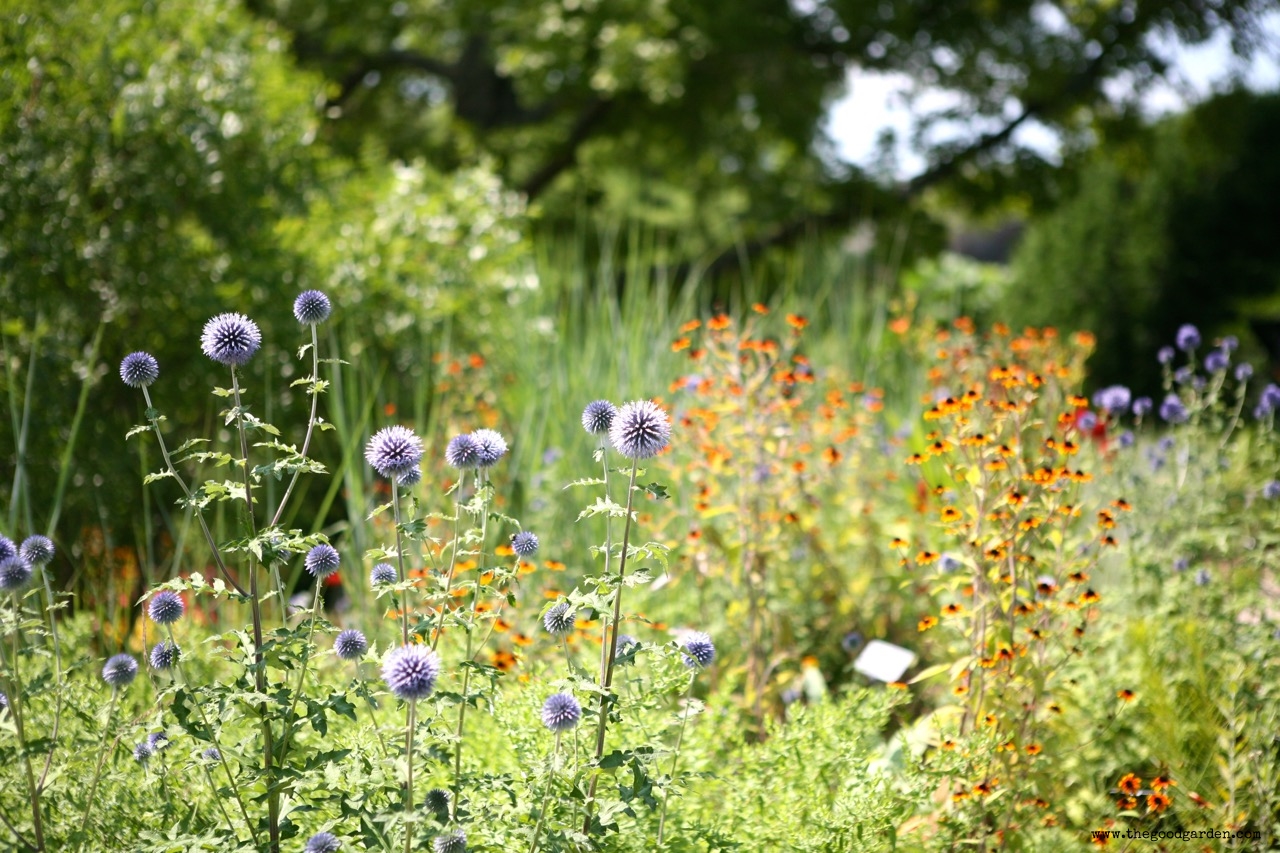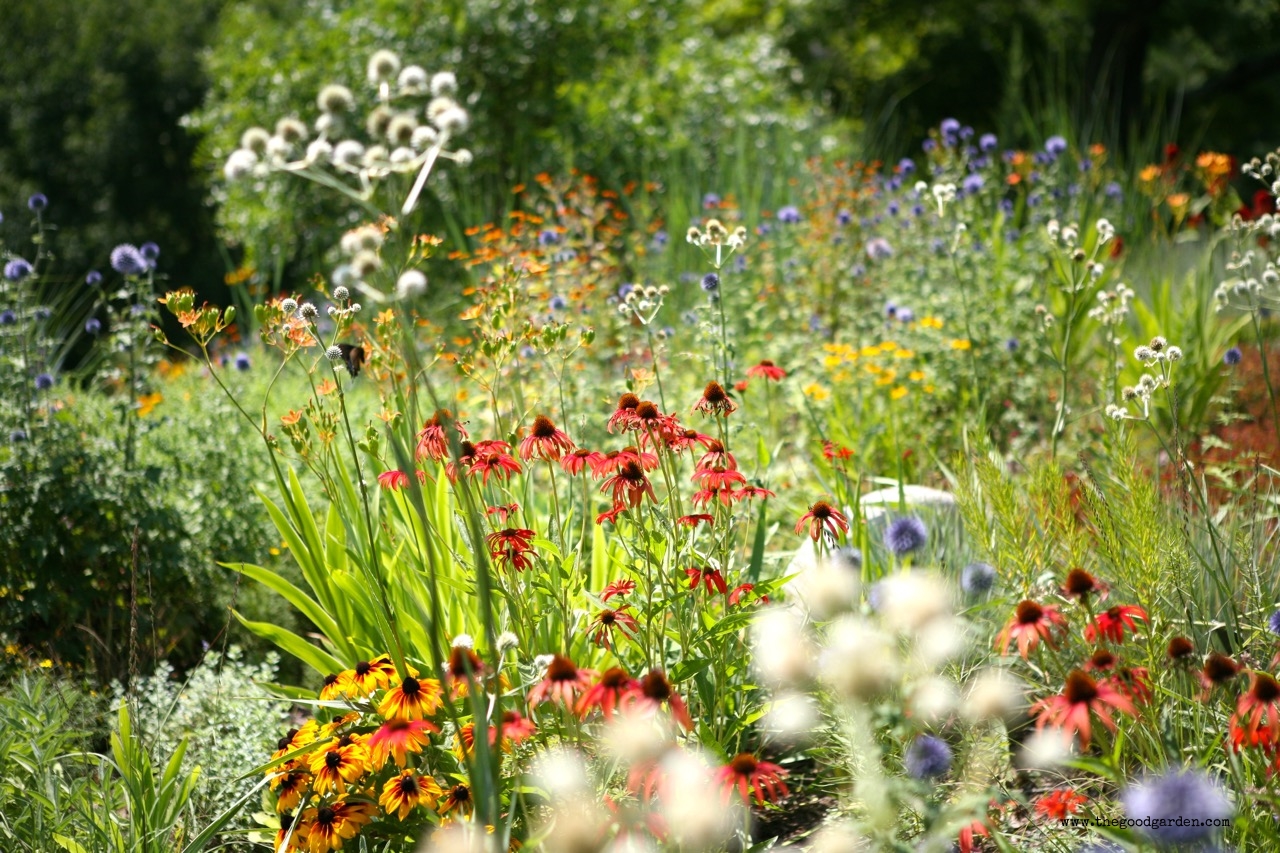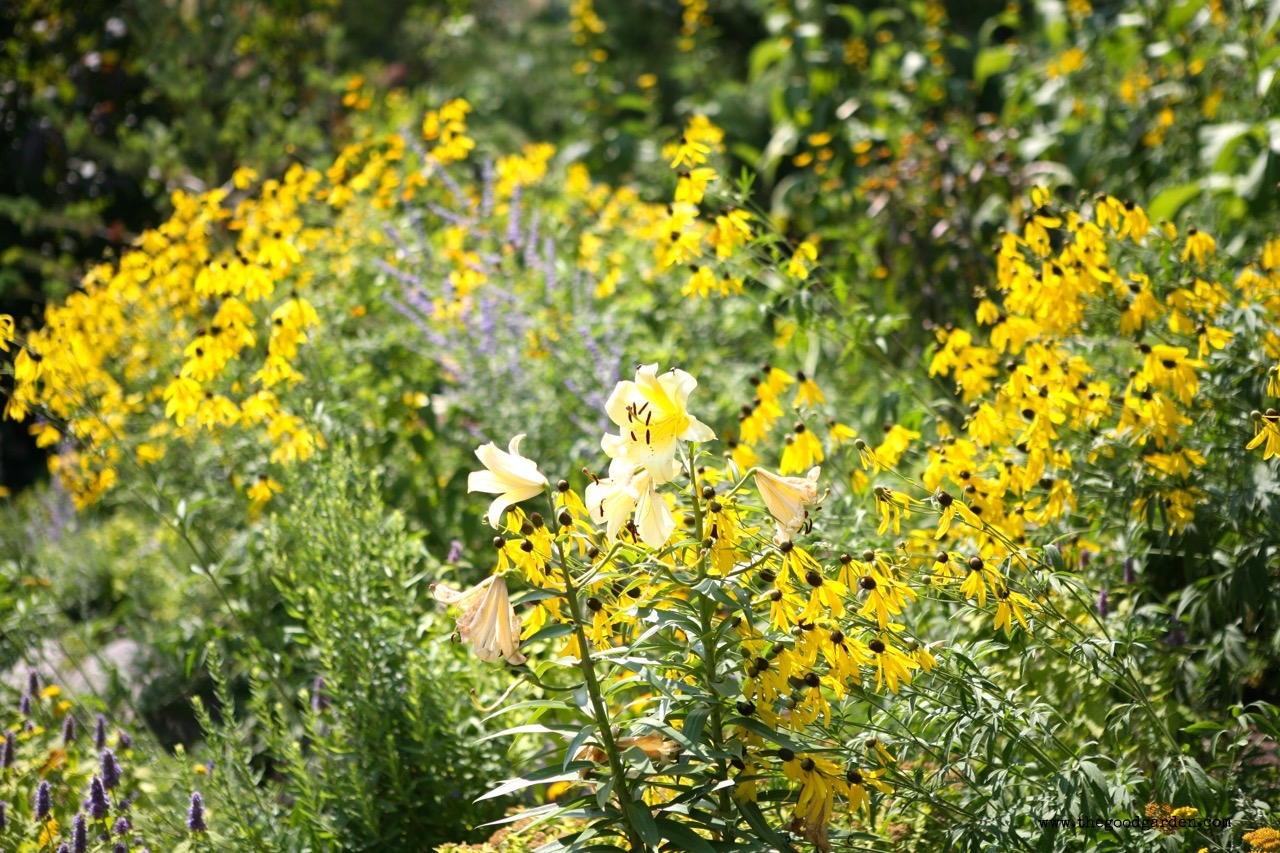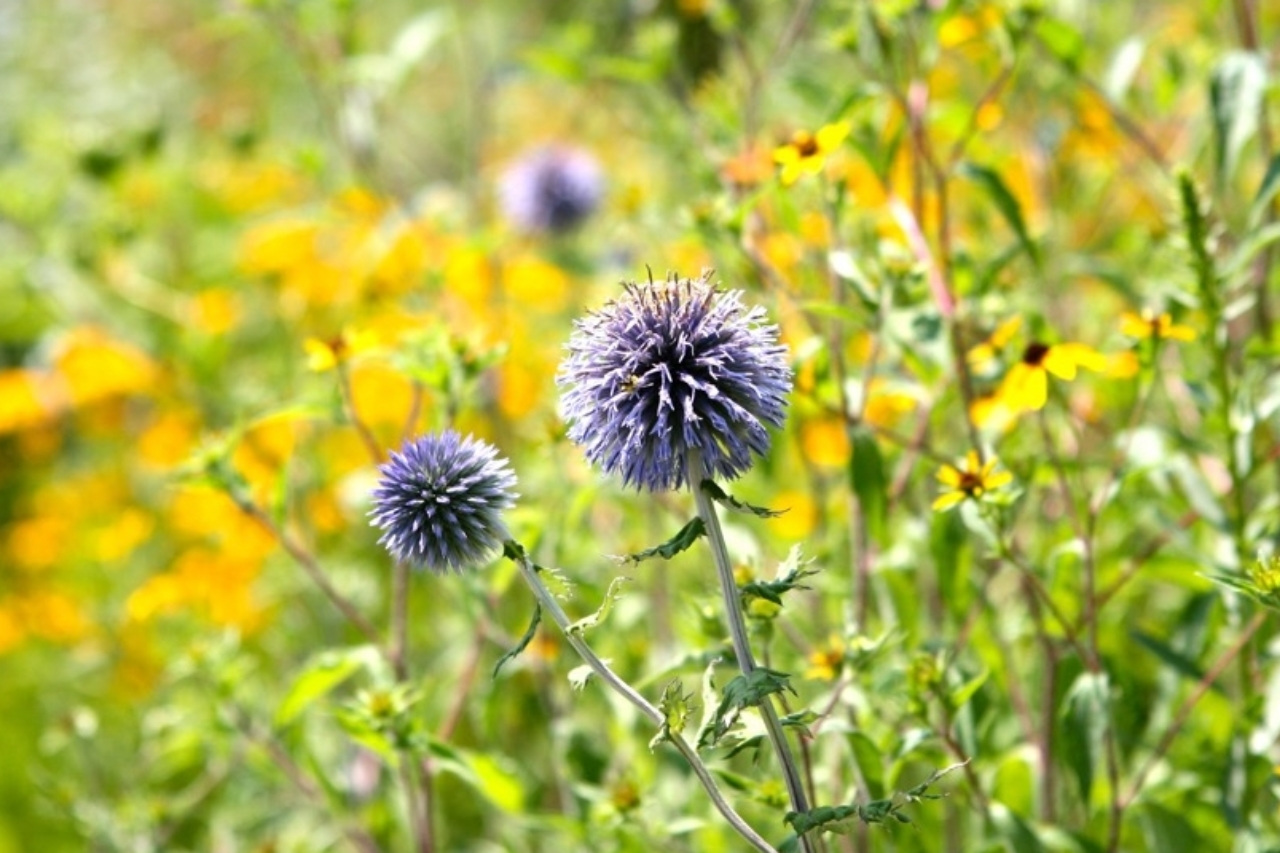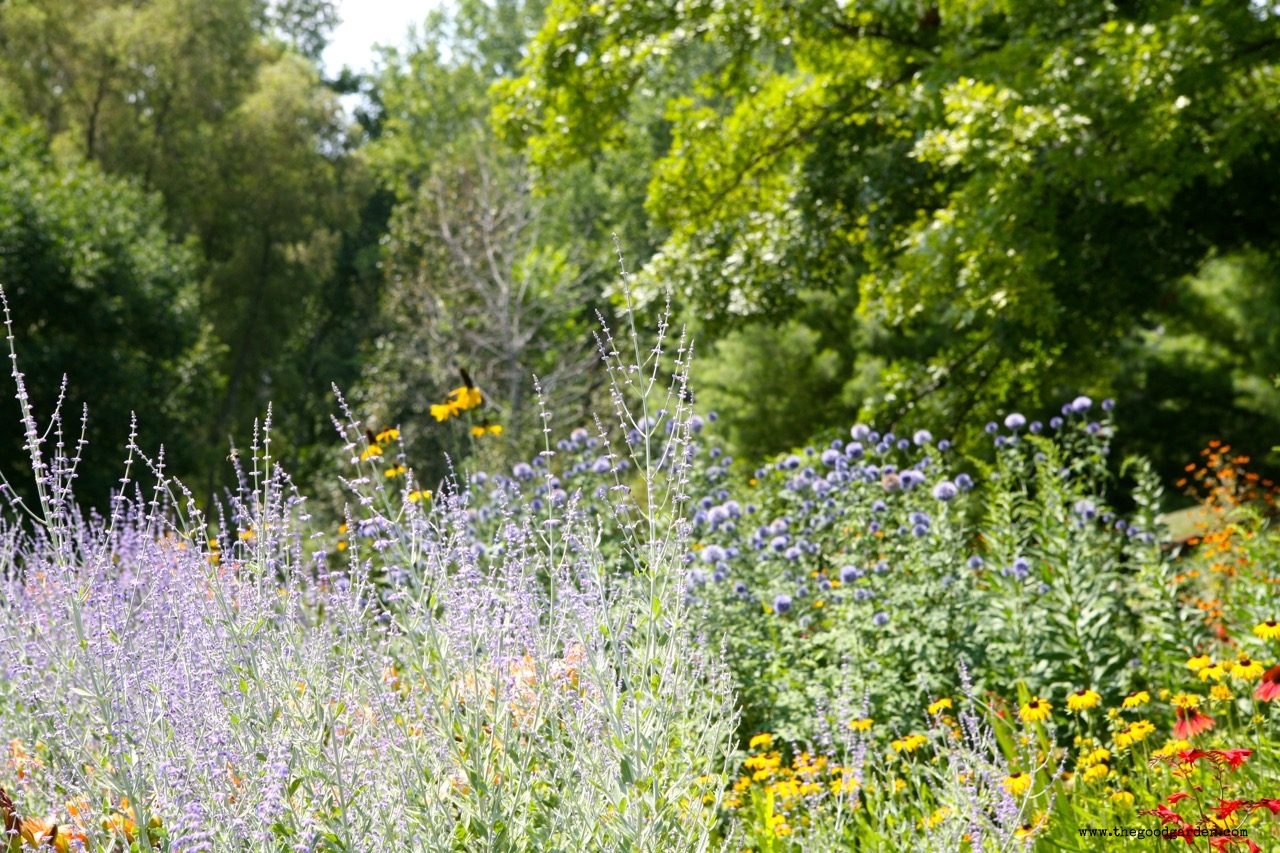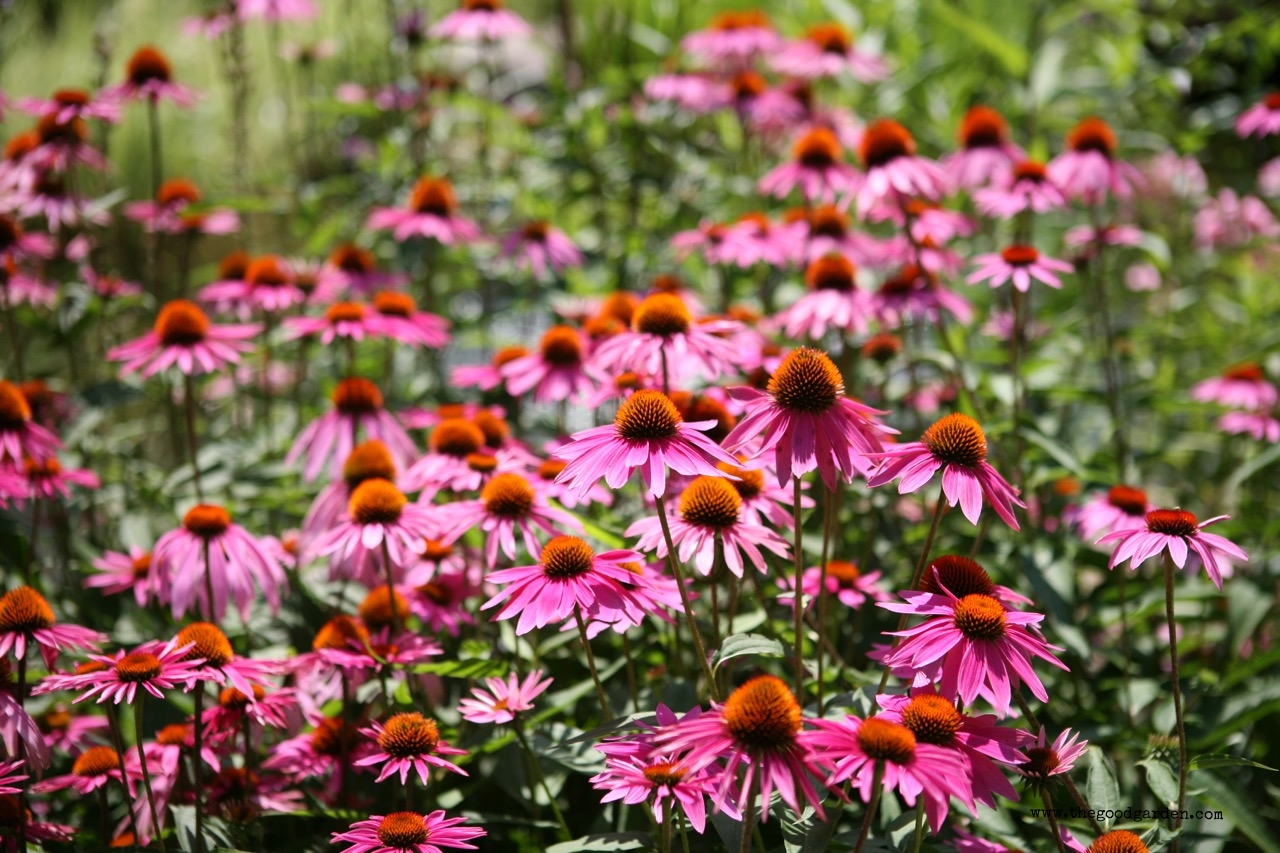Botanic gardens are great resources to learn about individual plants and to see them cultivated to their full potential. They are also inspiring places to pick up wonderful composition ideas. With only 50 days until spring, I have been thinking about my borders and a wonderful trip I made this summer to the Green Bay Botanical Garden in Wisconsin.
The area of the garden pictured above stopped me in my tracks. In between the Vietnam Veteran Garden and the Van Den Wymelenberg Color and Foliage Garden, this perennial border includes globe thistle, purple coneflower, coreopsis, and sage. The colors complement each other, the different textures provide refreshing contrast, and the thin stems allow flowers to float in the wind. Plants are arranged in small groupings so that they don’t get lost, yet are arranged loosely enough to look as they might in a meadow. Notice how the designers create rhythm in the garden by repeating the same plants over and over again.
One of the benefits of the northern climate is that spring and summer pack a real punch. Plants that might bloom sequentially further south, bloom at the same time here. So there are more opportunities to layer.
The Green Bay Botanic Garden is relatively young, opening to the public in 1996. Its 47 acres captures the beauty of Northeast Wisconsin. I find this garden particularly useful because it showcases plants that thrive locally.
The property, known as “the old Larsen orchard”, was assembled by William Larsen in the early 1900's to grow apples for his wholesale fruit and vegetable business. In the 1970’s a group called Plants in the Urban Environment started the work that eventually led to the creation of the botanic garden. This acreage lies in Hobart, WI on the land was once part of the Oneida Indian Reservation.
I was so impressed by the garden that I became a member on the first day that I visited.
Sign posted in front of the "old Larsen orchard" announcing that the botanic garden was coming soon, 1990's. Source: The Green Bay Botanical Garden.

